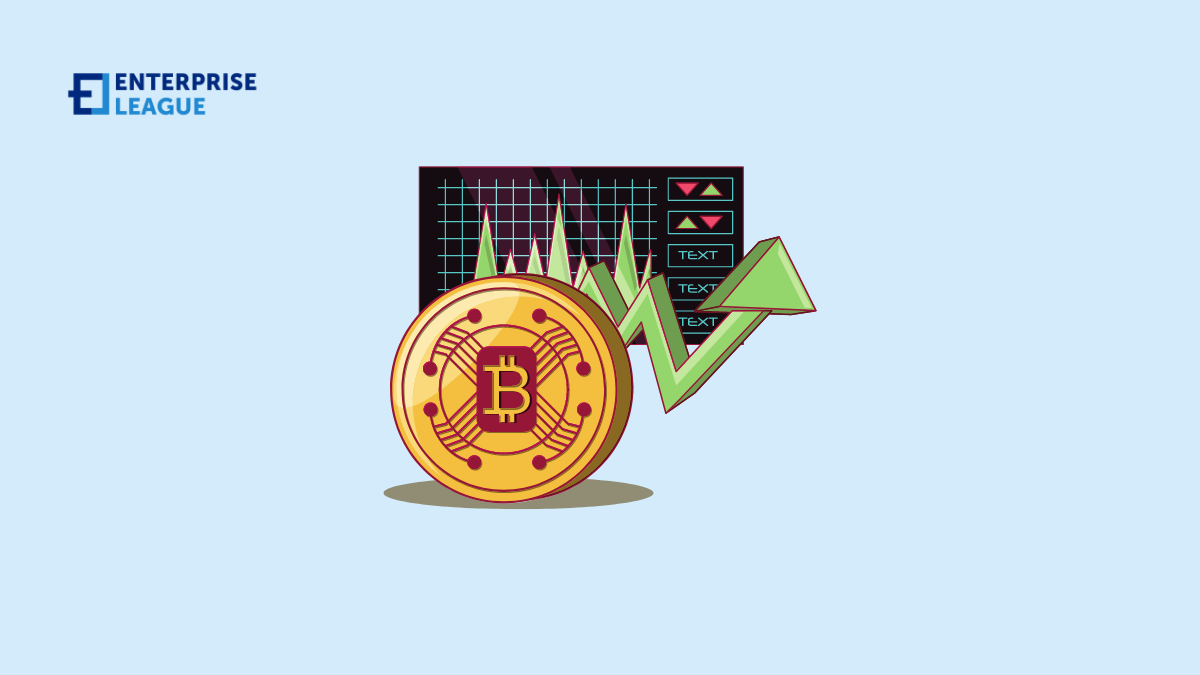From food trucks to meal prep kits, we’ve listed 17 exciting food business ideas with low startup costs and high growth potential suitable for all food lovers.

Discover the best B2B e-commerce platforms for your business needs
Are you looking to enhance your business’s online presence and streamline your B2B operations? In this article, we’ll explore the best B2B platforms that can cater to your specific business needs.
Whether you’re a small company or a large corporation, these platforms offer powerful features to boost your online sales and improve customer experience. Let’s dive into the world of B2B e-commerce and discover the perfect platform for your business.
Overview of B2B e-commerce platforms
When it comes to selecting the best B2B e-commerce platform for your business, it’s essential to consider the unique features and benefits each platform offers. In this section, we will explore the characteristics of three top B2B platforms and how they can meet your specific requirements.
BigCommerce
BigCommerce is an all-in-one solution that packs a punch in terms of functionality. With its robust features, this platform offers a comprehensive suite of tools to manage your e-commerce operations seamlessly.
From efficient order management to streamlined inventory control, BigCommerce empowers businesses of all sizes. It provides a user-friendly interface, making it easy for merchants to set up their online stores and start selling. If you’re seeking a powerful, scalable solution that can handle your growing business needs, BigCommerce should definitely be on your radar.
Shopify Plus
Ideal for small businesses with aspirations of becoming large enterprises, Shopify Plus offers an intuitive and customizable platform to build your online presence. With a plethora of design options and an extensive app ecosystem, you can create a website or app that reflects your brand identity from the get-go. The user-friendly interface and drag-and-drop functionality make it easy to manage your storefront and optimize your customer experience. As your business expands, Shopify Plus provides the scalability and flexibility to accommodate your growing needs.
OroCommerce platform
For those seeking simplicity combined with powerful features, OroCommerce platform emerges as a strong contender. Designed to cater specifically to the needs of small businesses, OroCommerce offers a user-friendly interface that simplifies the management of your online store. This platform equips you with essential tools, including secure payment gateways and efficient email marketing capabilities.
Widely favored by developers, designers, and store owners, OroCommerce emphasizes performance and security, providing you with a fast and secure B2B e-commerce experience.
In summary, these three platforms offer distinct advantages depending on your business needs and goals. It’s crucial to consider factors such as scalability, ease of use, customization options, and security while making your selection. Take the time to explore these platforms further to determine which one aligns best with your specific requirements.
BigCommerce platform
BigCommerce is a highly regarded e-commerce platform widely recognized for its suitability for B2B businesses. With its extensive range of features and functionalities, it stands as an excellent choice for B2B e-commerce websites.
One of the key strengths of BigCommerce lies in its ability to seamlessly integrate with various third-party software, enabling businesses to automate and streamline their operations effectively. When it comes to business process automation, BigCommerce offers a host of integrations with popular software solutions. Let’s take a closer look at some notable integrations:
Salesforce
Integrating BigCommerce with Salesforce, a leading customer relationship management (CRM) platform, can provide a significant advantage for your B2B business. This integration allows for seamless synchronization of customer data, order information, and sales activities between your e-commerce store and Salesforce. By leveraging the power of Salesforce, you can enhance your customer relationship management, track leads, manage customer interactions, and gain valuable insights for informed decision-making.
Mailchimp
Effective email marketing is crucial for B2B businesses, and BigCommerce offers integration with Mailchimp, a popular email marketing platform. By integrating BigCommerce with Mailchimp, you can automate your email campaigns, segment your audience, and create personalized email marketing campaigns. This integration enables you to nurture leads, engage with customers, and drive sales through targeted and well-timed email communication.
Zendesk
In summary, BigCommerce’s extensive integrations empower B2B businesses to optimize their operations by automating critical processes and leveraging specialized software solutions. By connecting with Salesforce, Mailchimp, Zendesk, and more, you can enhance customer relationship management, execute targeted email marketing campaigns, and provide exceptional customer support.
Shopify Plus platform
Shopify Plus is a powerful solution for B2B e-commerce, empowering businesses to thrive with its robust platform and comprehensive suite of features. It offers professional email templates to create visually appealing campaigns and nurture customer relationships for conversions and sales. Additionally, Shopify Plus enables businesses to establish a strong online presence with custom domains, while excelling in mobile optimization to capture the attention of mobile shoppers. With built-in apps, businesses can simplify critical operations, saving time and resources.
Overall, Shopify Plus provides the necessary tools and capabilities for businesses to run smoothly and drive sales growth in the B2B e-commerce landscape.
OroCommerce platform
OroCommerce presents itself as a remarkable B2B e-commerce platform, offering both free and premium plans to cater to varying business needs. Let’s delve into the details of each plan and the features they encompass:
Free plan
The free OroCommerce program eliminates transaction fees, allowing you to focus on growing your e-commerce business without incurring additional costs. While this plan restricts you to a single store, it brings forth several benefits. Notably, you gain access to email marketing capabilities, enabling you to engage with your customers through targeted and personalized campaigns.
Additionally, you have the option to customize your branding, ensuring that your store aligns seamlessly with your brand identity. These features, coupled with others, make the free plan a valuable choice for businesses looking to establish a solid online presence.
Premium OroCommerce plan
For businesses seeking advanced tools and enhanced capabilities, the premium OroCommerce plan is available at $49 per month or $499 per year. This plan encompasses all the features found in the free option while introducing additional functionalities to propel your business forward. With advanced search optimization, you can fine-tune your product discoverability, ensuring that your customers can easily find what they’re looking for within your store.
Furthermore, the premium plan offers product upsells and cross-selling recommendations based on customer behavior data. Leveraging insights from similar businesses or products within your store inventory database, you can drive additional sales and maximize customer value.
Lastly, with the premium plan, you gain the support of a dedicated account manager who will guide your business through any challenges that may arise, providing expert assistance along the way.
In general, OroCommerce’s free and premium plans cater to businesses of various sizes and requirements. Whether you opt for the free plan with its email marketing capabilities and custom branding options, or the premium plan with advanced search optimization, upselling features, and a dedicated account manager, OroCommerce empowers you to establish a successful B2B e-commerce presence.
Choosing the right B2B platform for your business
Choosing the right platform for your business can be a crucial decision that requires careful consideration. With numerous options available, it’s essential to evaluate various criteria to ensure the platform aligns with your specific needs. Here are some key factors to consider when selecting a B2B platform:
Features and functionality
Evaluate the features and functionality offered by the platform. Determine if it provides the necessary tools for your business, such as robust e-commerce capabilities and integrated customer relationship management (CRM) systems. Understanding your specific requirements will help you identify a platform that caters to your business needs effectively.
Data storage and management
Consider the amount of data you need to store and manage on the platform. Assess if the platform can accommodate your data requirements, ensuring scalability and efficient data management. A platform that supports your data growth without compromising performance is vital for seamless business operations.
Target customer base
Evaluate the size of your customer base and determine how many customers you aim to reach with your products or services. Look for a platform that can handle your projected customer growth and supports effective customer management and engagement in e-commerce growth strategies.
Platform reputation and trustworthiness
Research the platform’s reputation and trustworthiness within the industry. Consider factors such as how long the platform has been in operation and whether its users trust it. A platform with a solid reputation and a track record of reliability instills confidence and ensures a more stable foundation for your business.
User-friendliness and ease of use
Assess the user-friendliness of the platform. A user-friendly interface and intuitive navigation contribute to a smoother onboarding process and efficient day-to-day operations. Look for platforms that offer user-friendly dashboards and comprehensive documentation or support resources to facilitate ease of use.
In summary, taking the time to evaluate these criteria will help you make an informed decision when selecting the right B2B platform for your business. Remember to consider your specific needs, growth plans, and the platform’s reliability to ensure seamless and successful integration into your business operations.
Conclusion
When it comes to discovering the best B2B e-commerce platforms for your business needs, there are several options available. The platforms mentioned above, offer a variety of features and functionalities to support your B2B online sales.
Each platform has its own strengths and focuses, so it’s important to consider your specific business requirements, target audience, product offerings, and budget when selecting the most suitable platform.
By carefully assessing these platforms and their features, you can find the best B2B e-commerce solution that aligns with your business objectives and enables you to effectively reach and engage your target customers.
More must-read stories from Enterprise League:
- The relevance of print marketing and how to make it work for your business.
- Proven and tested psychological tactics for successful marketing.
- Things to consider before deciding on a business location.
- Find out how to get more customers for your business in a unquie way.
- Innovative small business growth tips that will take you to the next level.
Related Articles
Top 17 creative food business ideas (2024)
18 profitable real estate business ideas in 2024
If you are looking to start a new business venture we’ve listed 18 real estate business ideas with huge potential, from property management to flipping houses.
Top 19 low-cost business ideas in 2024
If you are looking to start a business on a budget, check out these 19 profitable low-cost business ideas that require little startup capital to launch.
Top 17 beauty business ideas in 2024
From salon services to skincare products, we’ve listed 17 creative and profitable beauty business ideas perfect for those with passion for beauty and cosmetics.
18 promising e-commerce business ideas in 2024
If you are still searching for inspiration on what to sell online here are 18 e-commerce business ideas with profit potential perfect for first-timers.
















